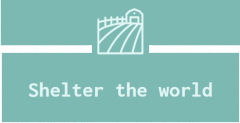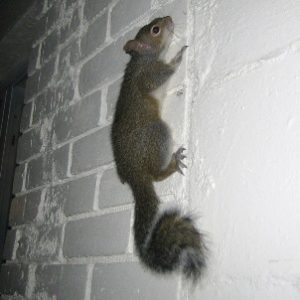It’s a cold Minnesota morning, and as the wind howls outside, a faint scratching noise breaks the stillness in your home. You pause, listening closer and find it’s coming from above. What started as a few harmless sounds quickly turns into a nightly disturbance. When the insulation starts to shift and droppings appear, the reality sets in: uninvited guests have moved in for the winter.
For homeowners and property managers alike, this is a familiar story. As temperatures drop, animals like mice, squirrels, raccoons, and bats look for warm, safe shelter. Unfortunately, your attic, walls, or crawl space can be the perfect refuge.
Why Animals Move In During Winter
When snow covers the ground and food sources become scarce, wildlife instinctively searches for warmth and protection from predators. Your property provides everything they need—heat, shelter, and sometimes even access to stored food. Common winter intruders include:
Mice and rats: Squeeze through openings as small as a dime to nest in insulation or behind walls.
Squirrels: Enter attics through small roof gaps and chew electrical wiring, creating fire hazards.
Raccoons: Tear through vents or soffits to make a den for the winter months.
Bats: Seek quiet, dark spaces like attics or chimneys to hibernate.
Birds: Nest in vents and eaves, bringing mites and debris with them.
Each of these animals brings potential health risks, property damage, and unpleasant odors that worsen the longer they stay.
The Hidden Dangers of Ignoring the Problem
Wildlife infestations are not just an inconvenience—they’re a serious problem. Rodent droppings can spread diseases like hantavirus. Raccoons may carry roundworm and rabies. Squirrels and bats can destroy insulation, leading to heat loss and higher energy bills. Left unchecked, a small infestation can turn into an expensive repair project that affects your property’s structure, wiring, and air quality.
The biggest mistake property owners make is waiting too long to act. Even in freezing weather, animals remain active, and once they’ve found a way in, they’ll keep returning year after year unless the issue is professionally resolved.
How Minnesota Wild Animal Management LLC Can Help
At Minnesota Wild Animal Management LLC, we understand that wildlife issues require more than just removal—they require a long-term solution. Our licensed team provides:
Comprehensive inspections to identify entry points and nesting areas.
Humane removal of animals using proven, safe methods.
Full repair and cleanup services to restore damaged insulation, seal entry holes, and sanitize contaminated areas.
Prevention strategies to keep wildlife from returning.
Our goal is not only to remove the current infestation but also to protect your home or building from future problems.
Prevention Starts Now
You can take proactive steps before wildlife becomes a major issue:
Inspect your attic, vents, and roofline for openings or chew marks.
Store food securely and avoid leaving pet food outside.
Trim tree branches away from the roof to reduce easy access points.
Schedule a winter inspection before the next cold snap hits.
The earlier you act, the easier it is to keep animals out and your property safe.
Don’t Wait for Damage to Happen
Winter wildlife problems won’t resolve themselves—they’ll only get worse with time. Acting quickly can save you stress, money, and potential health risks down the road. Minnesota Wild Animal Management LLC is here to help you identify, remove, and prevent wildlife issues year-round with professional, humane solutions that protect your property and peace of mind. Have you heard any strange sounds or noticed signs of animal activity in your home or building this winter?
The post Minnesota Winter Wildlife Problems You Can’t Ignore first appeared on Minnesota Wild Animal Management.
Leave a comment






